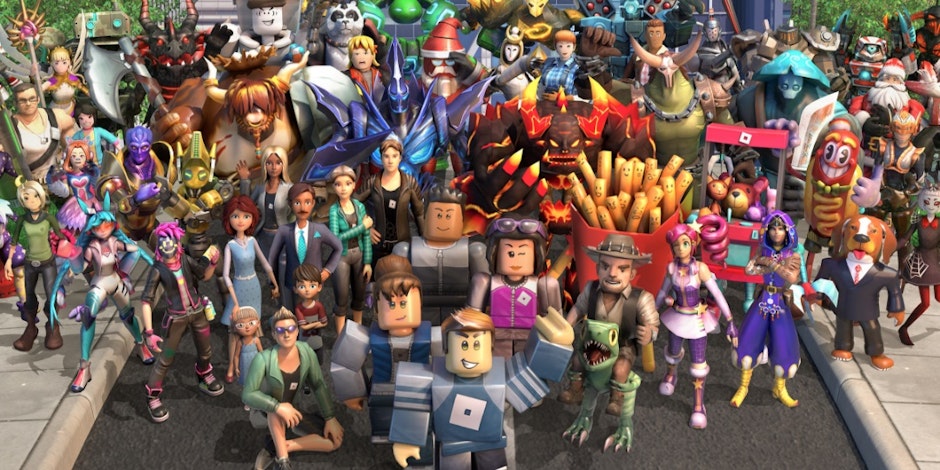Advertisers take note: Roblox is the next frontier
In today's world, advertisers are constantly looking for the next frontier, the next up-and-coming platform, the next 'any space' where they can authentically connect with consumers

Well, a new media space for advertisers has arrived, and it's called Roblox. To be clear, Roblox itself isn't new; the gaming platform has existed since 2006. But, recently, it has garnered fresh attention from first-mover brands who see it as the media-tech crossover of today with the most advertising potential.
What is Roblox?
For the uninitiated, Roblox is a gaming platform that hosts around 18 million games created by about 7 million game developers. The low-code platform makes it super easy and attractive for young players to design and develop their own games as no professional game development skills are required. Players can access gaming content from PCs, mobile devices, or gaming consoles, making it easily accessible to everyone. All of the games are free to play once a player sets up an account.
What makes the platform really interesting is that it goes far beyond what we think of as a gaming experience. It's a significant part of the metaverse that is home to a vibrant community where people log on to play just as much as to socialize, connect with friends, and more recently enjoy concerts from top artists and experiences from big-name brands such as Gucci.
Roblox players and their spending habits
The growth of Roblox is undeniable. In 2020, spurred on by the pandemic, Roblox's daily active users totaled 32.6 million, an increase of 85%. Players are almost even when it comes to gender. While the platform skews towards younger gamers, there's a common misconception that it's only for kids. Currently, 16% of players fall between 17-24 years old, and 14% are 25 or older. About one-third of the players are based in North America, while the rest are spread across other continents.
The Roblox universe has a booming economy, and players can buy its digital currency, Robux, to spend in-game. In 2020, users spent $1.7 billion purchasing digital items ranging from VIP passes to clothing for their avatars and various things to help them beat new levels. Over the last few years, Robux has topped players' birthday and holiday wish lists, trumping physical items. With lives increasingly shifting to the metaverse, how cool your avatar looks is just as important (and maybe even more so for many) as what you wear in real life.
How are brands entering the Roblox metaverse?
Roblox is a place where creativity genuinely has no limits, and that's true for both game developers and brands that want to tap into this audience. The charge for brands entering Roblox is certainly being led by TV and movie studios. Before releasing its animated TV series, 'The Misadventures of Master Moley,' cable network Boomerang launched a related game called Welcome to MoleTown on the platform to drum up hype and anticipation.
Similarly, before the movie 'Scoob!' debuted, the producers partnered with the platform's most popular game, Adopt Me, and allowed players to adopt a virtual Scooby-Doo. A game related to the animated series 'Ben 10' can be found on the platform, as can a 'Wonder Woman' game. There's even a gamified version of the Starcourt Mall from Netflix's iconic show 'Stranger Things.'
Fashion brands are no strangers to the gaming world, so it's no surprise that some have launched virtual products and experiences in Roblox. In 2019, Nike partnered with the platform to celebrate the release of the AirMax720, launching in-game Air Max sneakers for purchase.
Gucci Garden experience. Credit: Roblox
Gucci, which has also notably partnered with other games to offer digital clothing and accessories for avatars, took advantage of the flexibility of Roblox, creating a unique experience that replicated a real-world one called the Gucci Garden. As players moved through and explored different themed rooms, avatars absorbed visual elements such as patterned sleeves. Each avatar exited the Garden with a unique look. Many players shared images of their avatars on social media, furthering the brand's exposure and piquing curiosity from non-players.
With many younger players on Roblox, ones that will become the next generation of consumers, it makes sense that traditional brick-and-mortar brands would try to connect offline products to online worlds. Just as the 2020 winter holiday season kicked off, Hot Wheels launched a game exclusively on Roblox. This is a clear example of how a brand had a deep understanding of its target audience and aligned its values of play and imagination with a gaming platform that encourages the same.
Brand marketing in the metaverse is still in its early days, but as technology advances quickly and creativity flows, we can expect to see more brands enter the space in exciting and engaging ways. Although some advertising such as banner ads exist in Roblox, the channel is relatively untapped. In the coming year or two, expect to see an explosion of advertisers popping up in games and making gaming a more regular part of their media mix.
By Natalia Vasilyeva, VP Marketing at Anzu.

